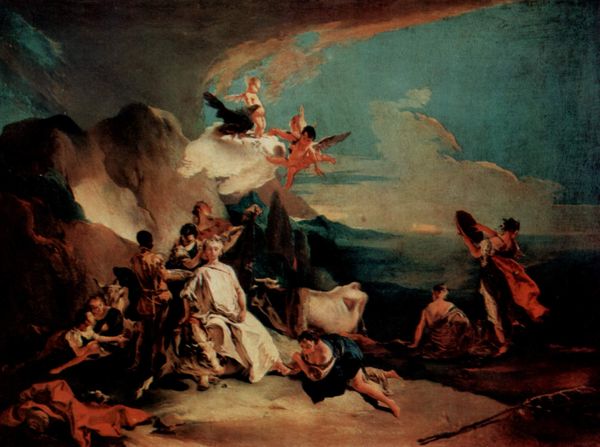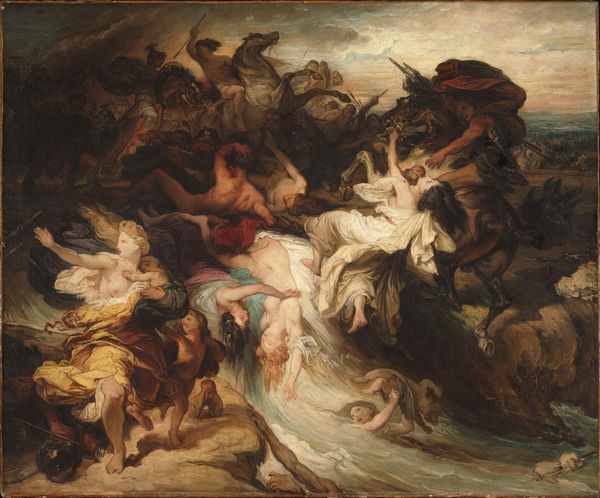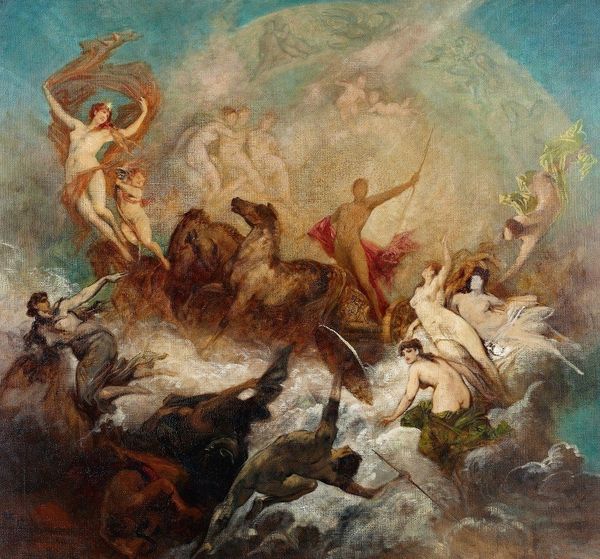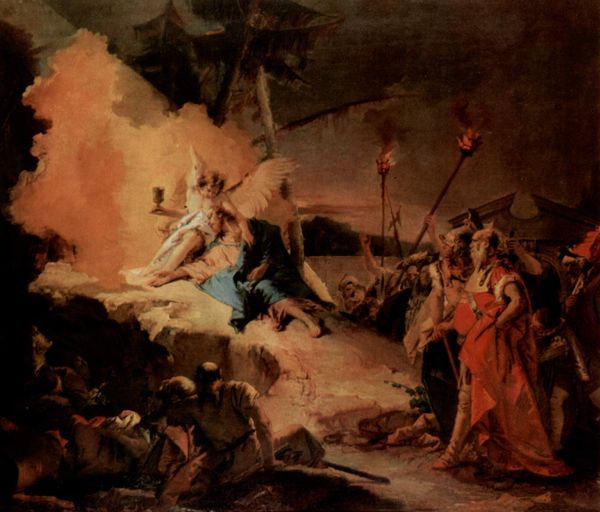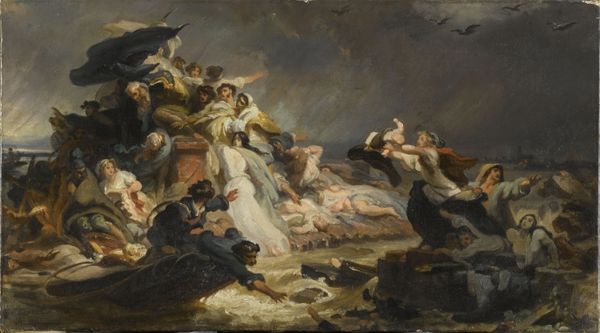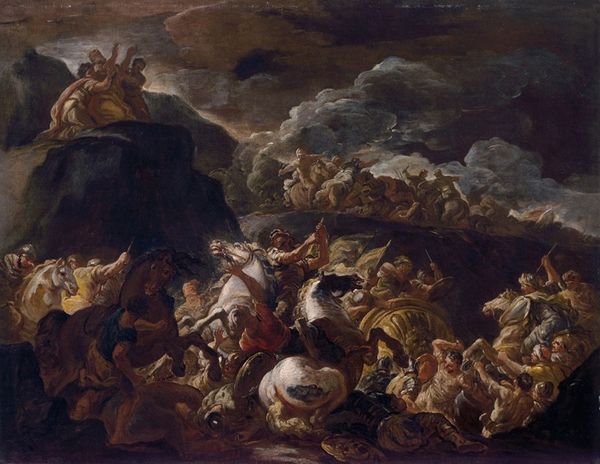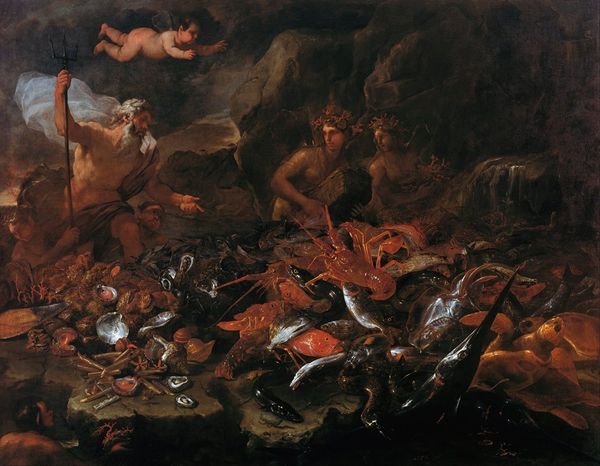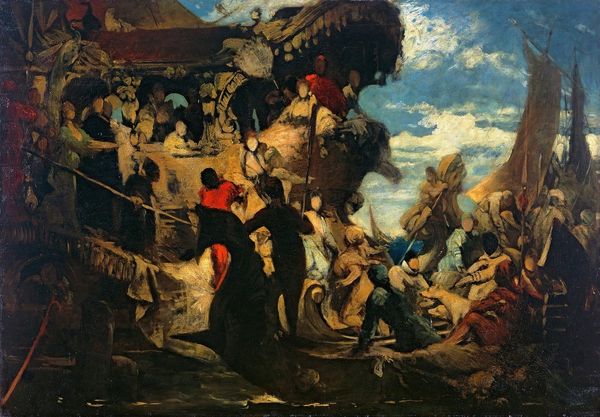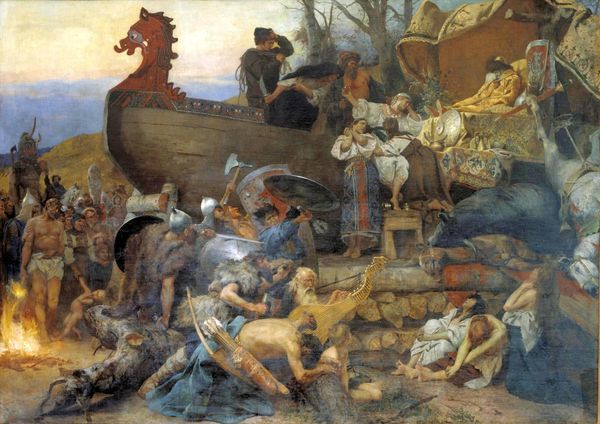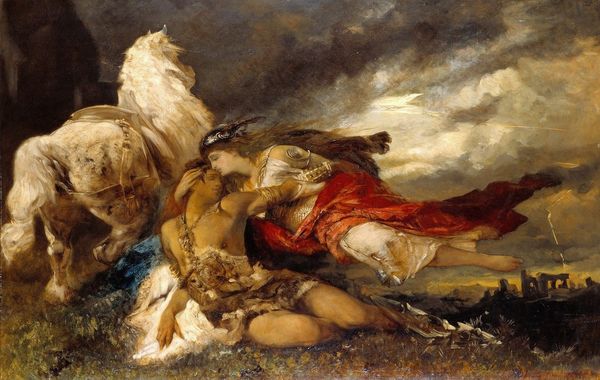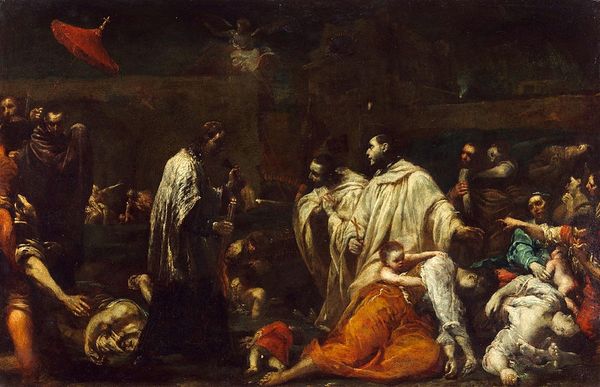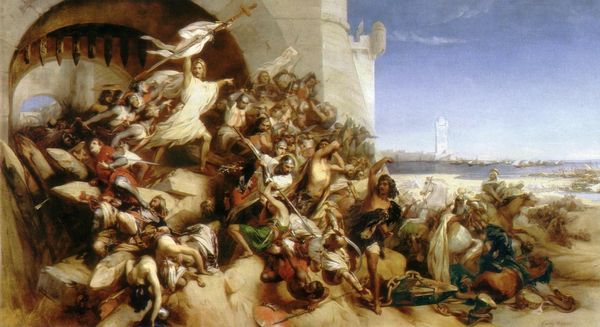
Copyright: Public domain
Curator: Look at this, a maelstrom of emotion captured on canvas. Nikolaos Gyzis’s "After the Destruction of Psara", an oil painting dating back to 1898. What springs to mind for you? Editor: Overwhelming. It feels raw, almost primal in its depiction of human despair amidst chaos. The darkness pressing in, that tiny boat swallowed by the sea…it speaks of profound loss. Curator: Absolutely. Gyzis channels the Romantic spirit here. Note the turbulent brushstrokes, the chiaroscuro... it amplifies the drama, placing us right in the aftermath of the massacre. The stark whiteness of the flag above seems almost a cry of hope, doesn’t it? Editor: That flag... Yes, visually, it pulls us upward, toward something beyond the immediate suffering. But the symbol itself… flags always carry a complicated weight. Nationhood, identity, belonging... and here, utter failure to protect. It’s a ghost flag, a tattered promise. Curator: That's insightful. And the figures themselves? Huddled, grief-stricken, yet still rowing, driven forward. The artist does such a wonderful job showing the duality of survival. The need to endure warring with utter desolation. I think Gyzis perfectly encapsulated a critical point of view towards the role of the war. Editor: Their expressions are swallowed by shadow. See how their bodies form almost one single unit of grief and fear, like a raft rather than people. Curator: War often melts away identity into just this survival mode. I keep coming back to how such a recent event—the destruction of Psara in 1824, relatively fresh when Gyzis paints this—takes on the mantle of mythology here. History is literally painted over. Editor: Indeed. Gyzis doesn’t give us straightforward historical realism. The boat becomes almost Charon’s vessel ferrying souls across the Styx. He's accessing something ancient, echoing through Greek history. Curator: Leaving us with a sense of historical trauma that resonates even now. It's powerful, even unsettling. Editor: Yes, leaving me pondering on how trauma is encoded into our collective imagery and how these historical wounds keep finding new ways to express themselves in our current psyche.
Comments
No comments
Be the first to comment and join the conversation on the ultimate creative platform.
